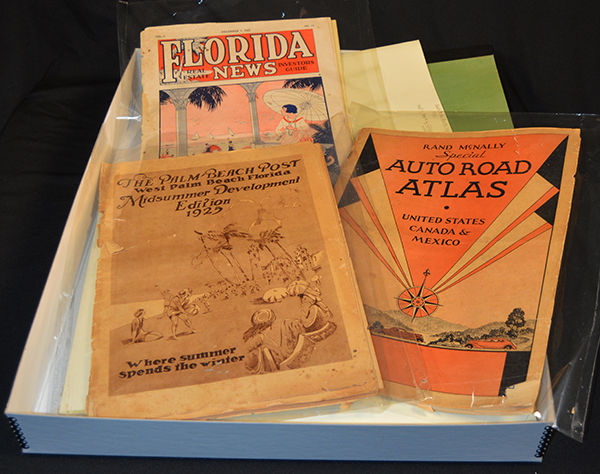
Post Civil War Florida was a dream. Just look at all the ads and promotional material created to attract tourists and settlers and investors and farmers and anyone with some money to exchange for a piece of that dream. Publications in the collection of the Library of Florida History in Cocoa are an interesting way to track both the target demographics of those ads and the evolving graphic styles marketers used.
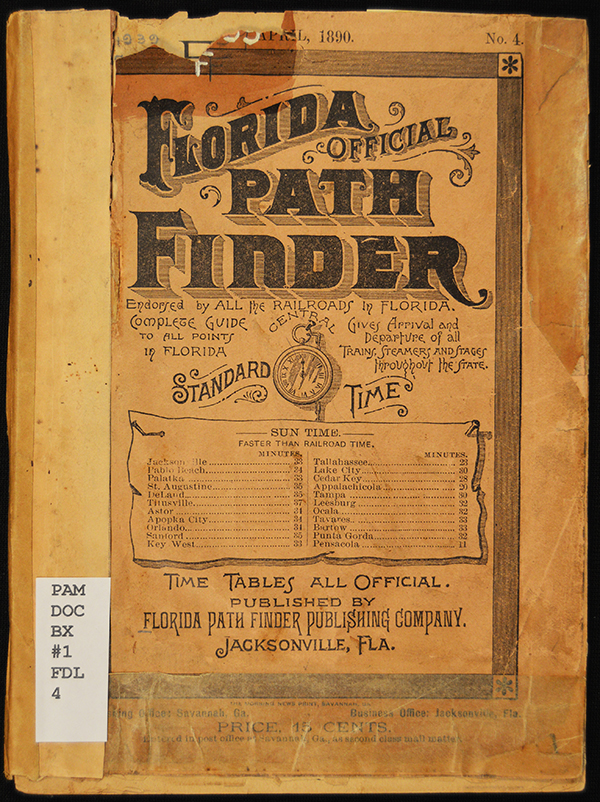
In the late 1800’s Florida was becoming a tourist destination for those who could afford it. Spending ‘the season’ in Jacksonville or St. Augustine became quite the thing for well-to-do northerners who wanted to get away from the cold and snow, often by train.
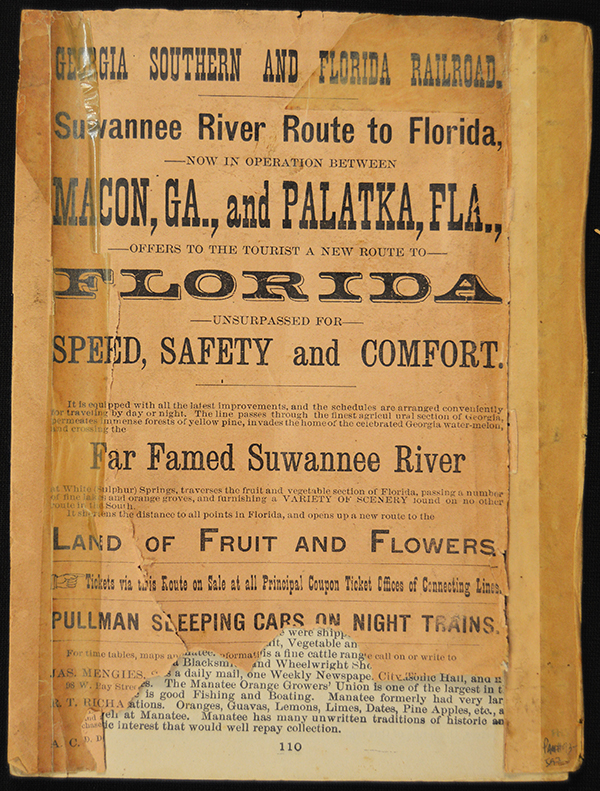
Naturally the advertising and guidebooks, such as this from the Library of Florida History collection, aimed at these potential snow birds, used the most up-to-date and tasteful late- Victorian styles of print fonts and artwork. Layout and illustrations were heavily influenced by classical and Baroque art, as well as by the emerging Art Nouveau (https://www.britannica. com/art/Art-Nouveau).
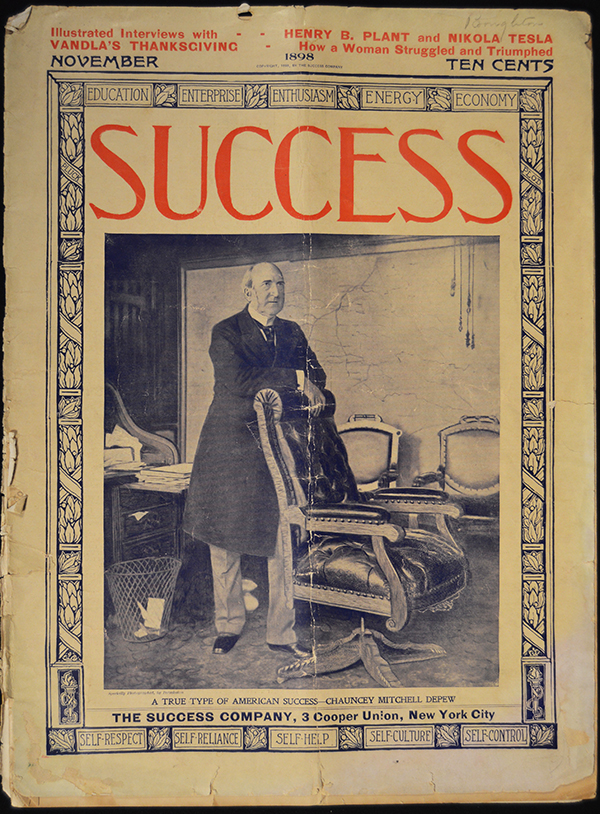
Beyond ads, the marketing efforts could include placement of stories with a Florida connection such as the story about Henry Plant (https://www.plantmuseum.com/about/henry-b-plant-bio) in publications aimed at the upscale, progressive reader.
As Archivist Ben DiBiase outlines on Florida Frontiers (https://myfloridahistory.org/ frontiers/radio/program/398) as Florida’s population grew, and lifestyles nationally changed after WWI, the vacation marketing expanded to include a wider range of ‘just folks’ who could come to the state by car. The marketing changed looks to keep up with the times.
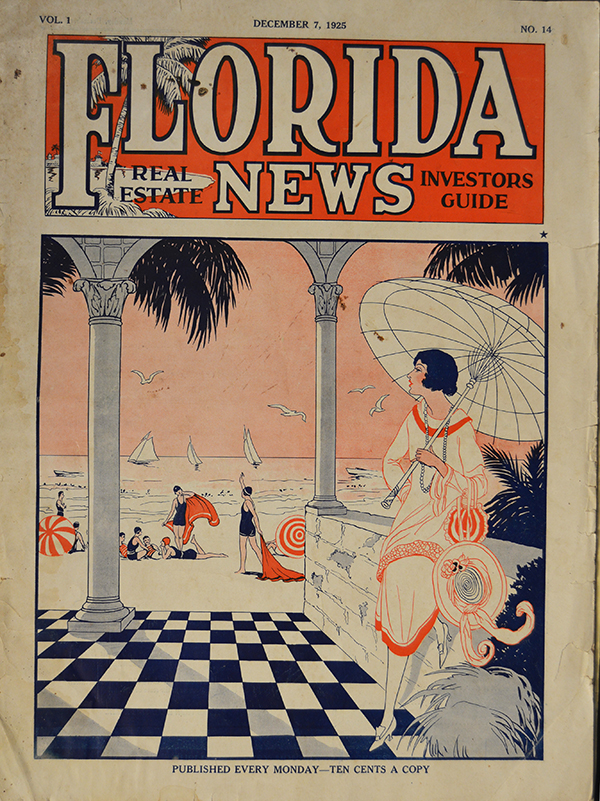
Miami based Florida News magazine was full into the new Art Deco style on a 1925 cover, with this striking, if over-the-top, beach scene promising ‘the dream’ both for the middle class traveler visiting the state and the burned out insurance salesman in Detroit fed up with shoveling snow.
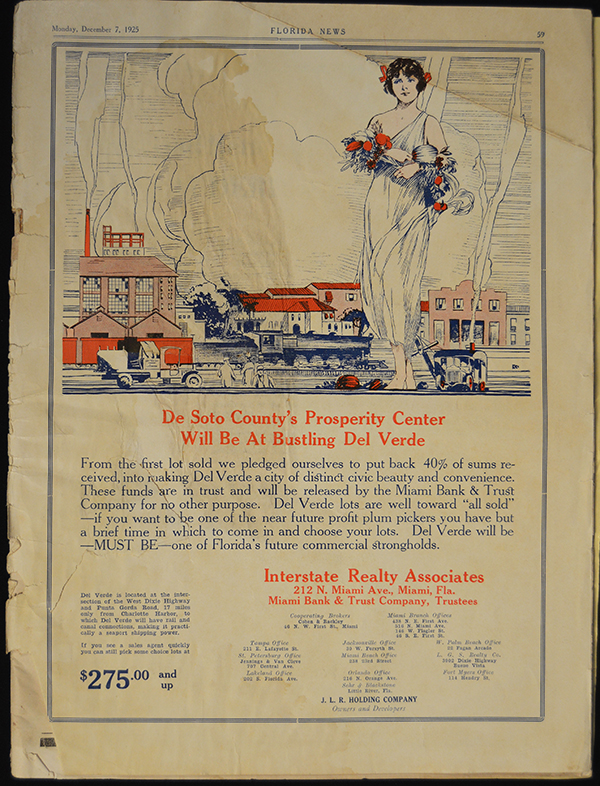
The back cover art continued the theme of classic American icons in a more traditional style.
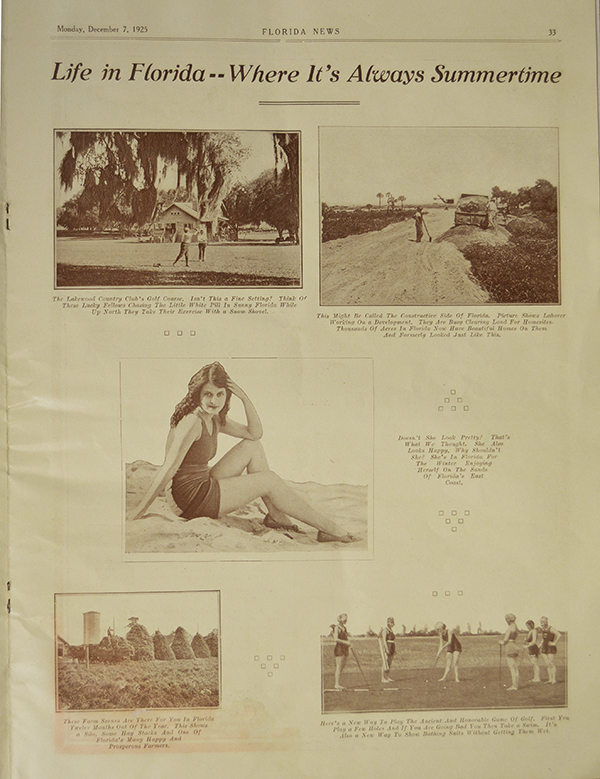
And inside were photos proving someone was living the good life and implying ‘why not you?’ Through the early ‘20’s Florida was leading the good life, with seemingly unstoppable growth and development, and a half million more residents in the years right after WWI, which may not seem like a big number now, but there were fewer than one million residents in the whole state in 1900.
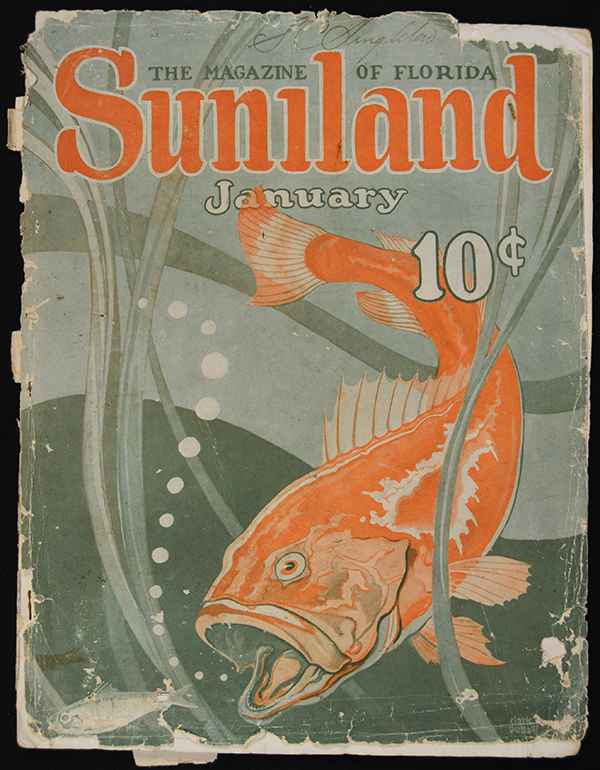
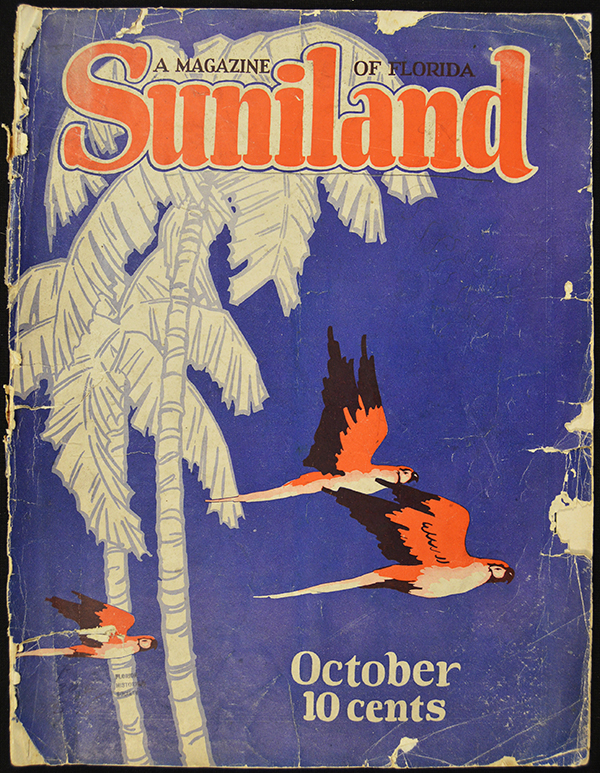
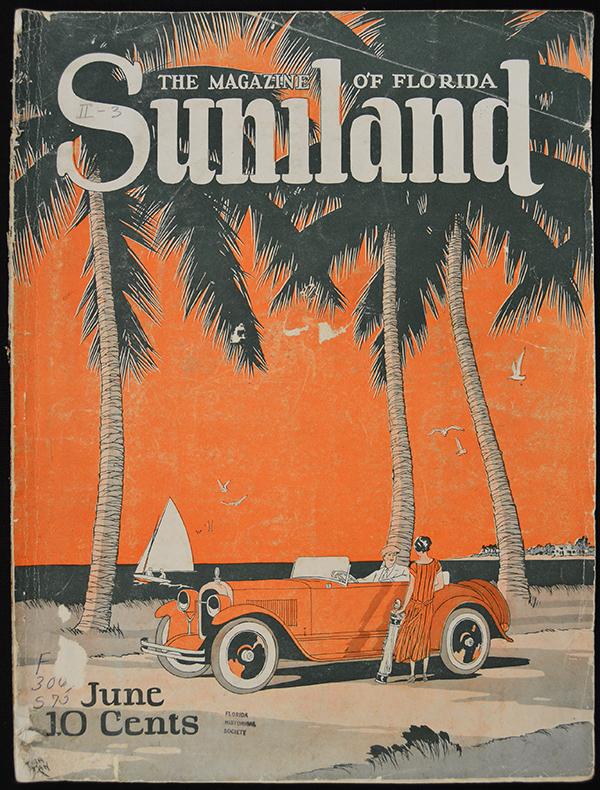
Somehow, the clean lines and bold colors of Art Deco seemed so perfectly attuned to selling the ‘Florida Dream’ that the magazine Suniland out of Tampa relied on it month after month for their cover art.
Then the building boom collapsed following the 1926 Great Miami Hurricane (https://myfloridahistory.org/webextras/webextras/99) and a few other developments that many economists and historians say were actually the beginning of The Great Depression.
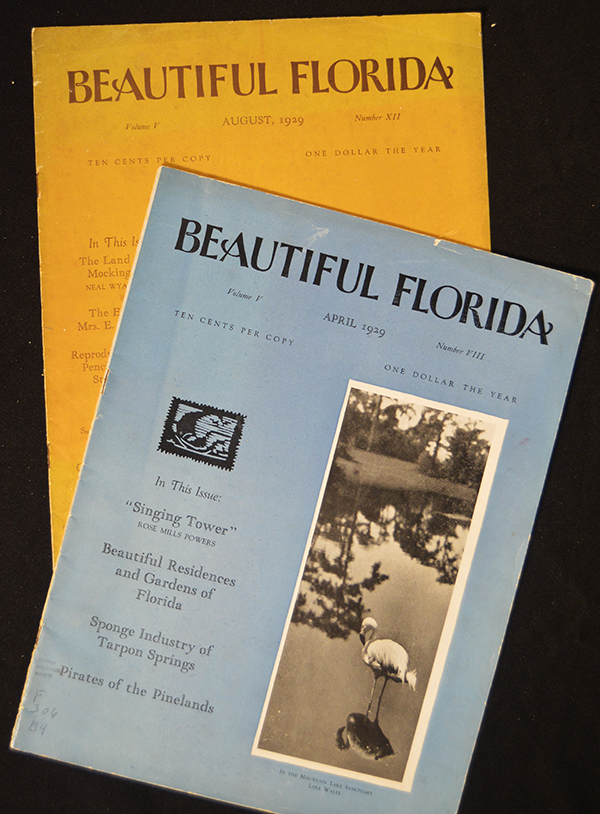
The message was still there, but some of the exuberance was gone. By 1929, but still before the stock market crash in October, the message seems more fact-based, the presentation simpler. It has a ‘30s’ look.
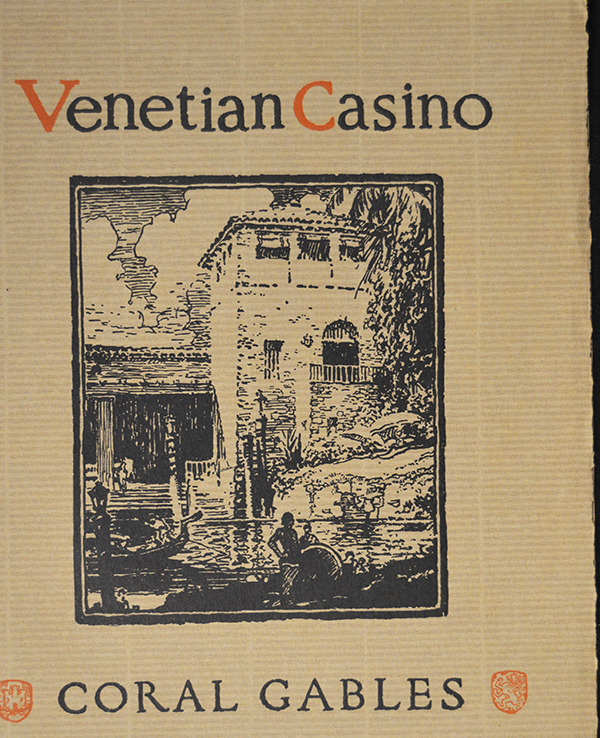
Even something as simple as a glorified swimming hole (https://www.coralgables.com /venetian-pool-history) seemed to opt for restraint.
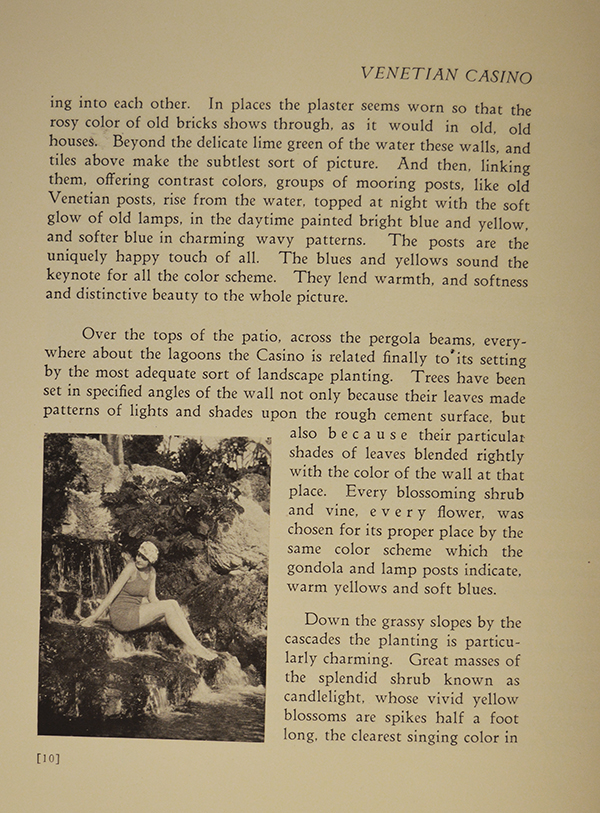
The copy seems almost apologetic. The third line of the middle paragraph: “...the most adequate sort of landscape planting.” What kind of marketing pitch is that? The bathing beauty is still pictured, but she can’t meet the viewer’s eye. Definitely, this was Florida on the ropes.
Then came WWII. Thousands of GIs trained in Florida. They liked the climate and after the war a lot of them came back, both for vacations and to live.
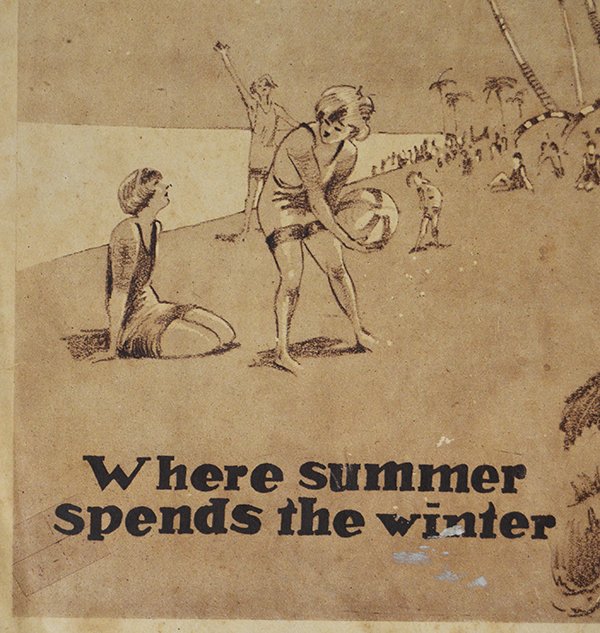
The cover art on magazines and flyers aimed at tourists may have had a different, 50s look, stylized and more realistic; but, the message to the burned out insurance salesman shoveling snow in Detroit remained the same dream.
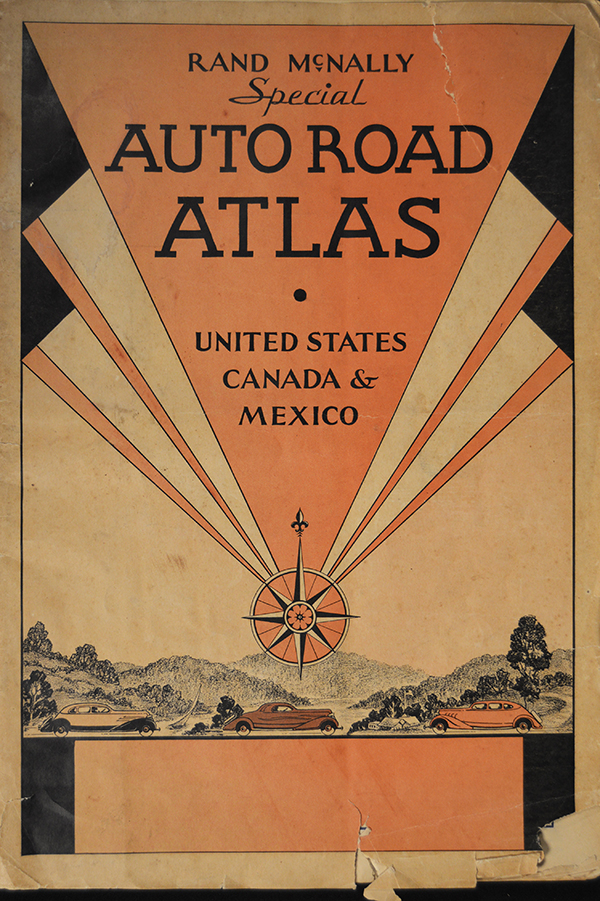
The old favorite, the bold and loud Art Deco, still proclaiming the good life in the midst of the Great Depression on this 1935 map, has actually moved on to become its own form of artistic expression, perhaps transcending its original practical marketing use (https://www.theartstory .org/movement/art-deco/).







